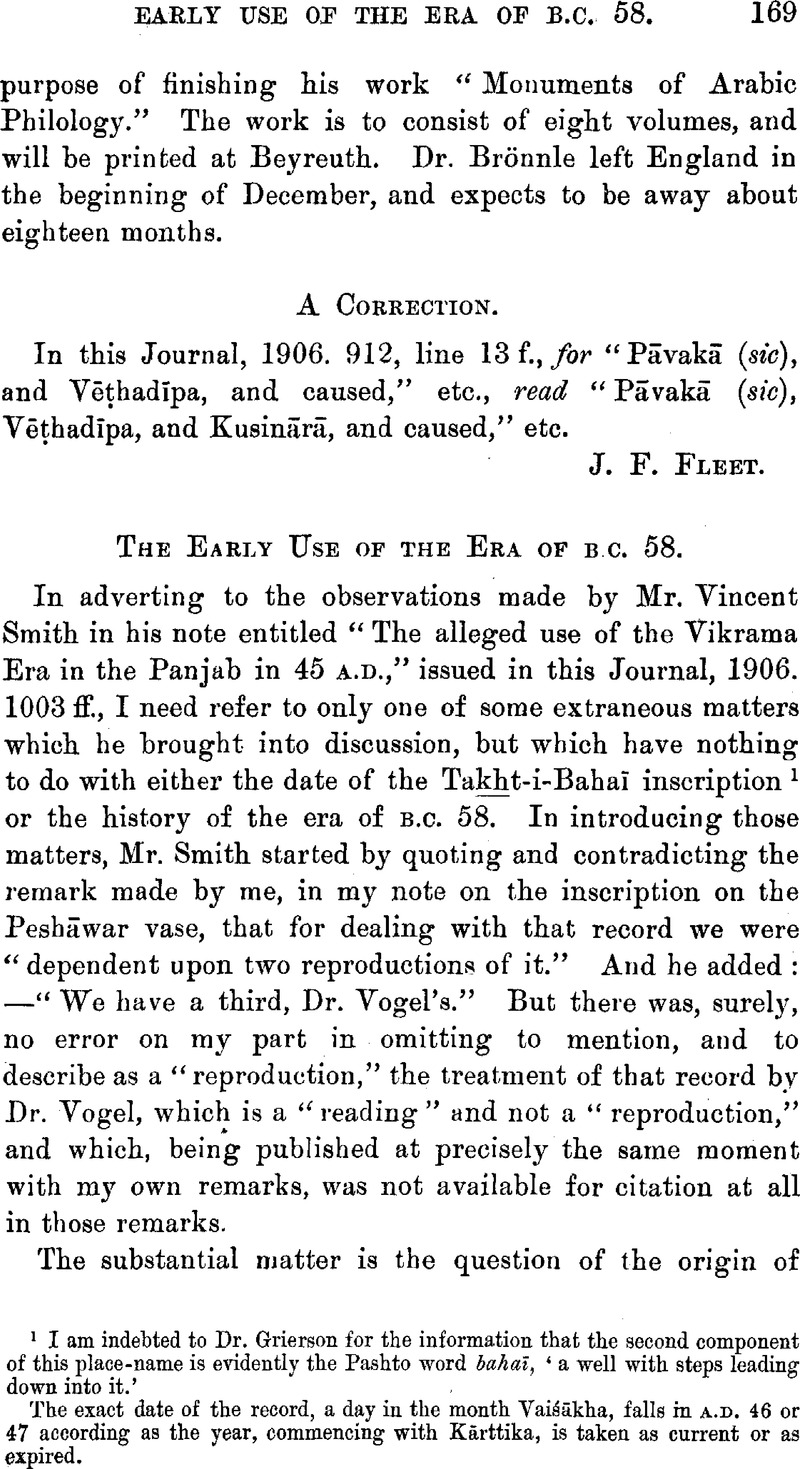No CrossRef data available.
Published online by Cambridge University Press: 15 March 2011

page 169 note 1 I am indebted to Dr. Grierson for the information that the second component of this place-name is evidently the Pashto word bahaī, ‘a well with steps leading down into it.’
The exact date of the record, a day in the month Vaiśākha, falls in A.D. 46 or 47 according as the year, commencing with Kārttika, is taken as current or as expired.
page 171 note 1 For most of these dates, see the list given by MrSmith, in this Journal, 1903. 8 ff.Google Scholar; the reference for the date of the year 299 —(the unit is doubtful)—is Vienna Oriental Journal, 10. 171 f.Google Scholar For dates in the years 3, 19, and 40, see EI, 8. 176, 179, 181, 171Google Scholar. M. Senart has given us dates in the years 102 and 200: JA, 1894, 2. 511, 514Google Scholar; Notes d'Épigraphie Indienne, No. 5, pp. 33, 36. For a date which was read first as the year 191 and then as the year 179, see the Annual Report of the Archæological Survey of India, 1903–4. 255, and plate 70, No. 9: it is really the year 399; see further on, under a book-notice of the Report in question.Google Scholar